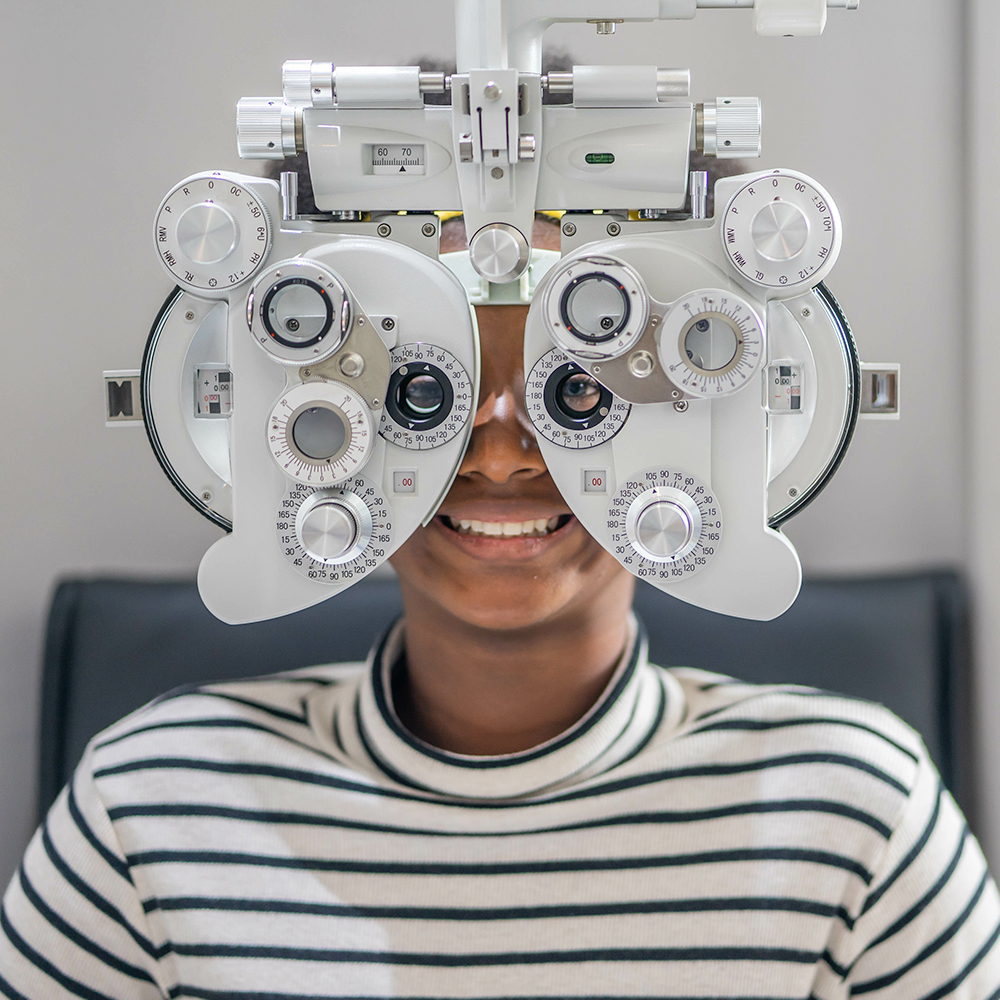Top Factors to Check Out an Optometrist Chino for Your Eye Health
Top Factors to Check Out an Optometrist Chino for Your Eye Health
Blog Article
Checking Out the Newest Technological Improvements in Optometry and What They Mean for Eye Doctors
From the precision of Optical Comprehensibility Tomography to the nuanced understandings supplied by AI-driven analysis devices, these technologies are setting brand-new criteria in patient assessment and treatment. As these innovations penetrate the method, optometrists are faced with the challenge of accepting these devices to boost client end results.
Innovations in Diagnostic Devices
Advancing the field of optometry, advancements in analysis devices have actually changed the means eye care professionals assess and detect aesthetic impairments and eye problems. The previous decade has observed considerable technological innovations, making it possible for even more extensive and accurate examinations.
One more trick advancement is the intro of advanced corneal topography systems, which map the surface area curvature of the cornea with accuracy. These devices are particularly valuable for fitting get in touch with lenses and detecting corneal disorders. Digital retinal imaging has actually changed typical ophthalmoscopy, offering in-depth, breathtaking views of the retina that promote extensive aesthetic exams.
The development of wavefront aberrometry has actually additionally been essential, allowing the evaluation of refractive errors with unrivaled accuracy (Opticore Optometry). This modern technology aids in tailoring rehabilitative lenses and boosting medical end results for refractive surgical procedures. Jointly, these analysis improvements encourage eye doctors to provide exceptional client care, guaranteeing early treatment and customized treatment techniques, ultimately improving aesthetic wellness results
AI in Individual Management
Building on the structure of innovative diagnostic tools, the incorporation of fabricated intelligence (AI) in patient management stands for a transformative leap for optometry. AI systems are significantly utilized to enhance performance, precision, and personalization in individual care.
Additionally, AI-driven systems help with structured patient communications and management processes. Automated scheduling, digital consultations, and customized follow-up strategies not only enhance person contentment however additionally optimize time administration for professionals. These systems can triage patients based on the necessity of their conditions, guaranteeing that those in essential need get punctual attention.
Additionally, AI improves decision-making by supplying eye doctors with evidence-based recommendations and treatment paths. By incorporating data from electronic health and wellness documents, AI devices offer understandings that educate scientific choices, lowering the risk of errors and improving client results. As AI remains to progress, its function in individual administration will likely increase, improving the landscape of optometric treatment.
Developments in Retinal Imaging
In the world of optometry, retinal imaging has actually experienced exceptional technical innovations that are boosting analysis capacities and individual treatment. Advancements such as Optical Comprehensibility Tomography (OCT) and fundus digital photography have actually changed just how eye doctors examine the retina and picture. OCT, in specific, offers high-resolution, cross-sectional images of the retina, permitting for the thorough assessment of its layers. This ability is very useful for very early detection and management of problems like glaucoma, diabetic person retinopathy, and age-related macular degeneration.
Improved imaging methods like OCT angiography are additional refining diagnostic precision. This non-invasive strategy maps blood flow in the retina, offering critical understandings into vascular health and wellness without the need for color injections. Furthermore, adaptive optics technology is being incorporated into retinal imaging systems to correct ocular aberrations, supplying unmatched photo look at more info quality. Such developments promote the identification of min retinal changes that might signify illness development.
Furthermore, developments in fabricated intelligence are increasing retinal imaging by enabling automatic evaluation of huge datasets. These systems assist optometrists in recognizing patterns a sign of pathology, therefore enhancing analysis precision and performance. Collectively, these technologies are transforming retinal imaging into a foundation of contemporary eye care, enhancing end results and broadening therapeutic possibilities.
Teleoptometry's Growing Function
Teleoptometry is progressively becoming a vital part of eye treatment, driven by advancements in electronic interaction and diagnostic devices. This is especially advantageous in underserved and country areas where access to specialized eye treatment is typically limited.
The assimilation of fabricated intelligence (AI) further boosts teleoptometry, allowing the analysis of visual information and helping in the detection of check my source ocular problems such as glaucoma and diabetic retinopathy. AI-powered algorithms can swiftly translate complex imaging information, offering eye doctors with important understandings that strengthen professional decision-making.
Additionally, teleoptometry supports connection of treatment through smooth integration with digital health records (EHRs), permitting optometrists to keep detailed individual backgrounds. When consulting with various practitioners., this makes sure that patients obtain customized and regular care also.
Despite these benefits, difficulties remain, including ensuring information protection and managing person expectations. Nonetheless, teleoptometry stands for a significant stride in the direction of even more accessible, effective, and patient-centered eye treatment. As modern technology evolves, its role is poised to expand further.

Future Trends in Eye Care
A myriad of innovative patterns is readied to reshape the future of eye care, driven by technological developments and the progressing demands of people. One significant trend is the combination of artificial intelligence (AI) in diagnostics, which promises to boost the accuracy and effectiveness of eye exams. AI formulas can examine huge amounts of data from retinal photos, possibly finding conditions like diabetic retinopathy and glaucoma earlier than typical approaches.
Additionally, individualized medicine is gaining grip in optometry, with genetic testing educating personalized treatment strategies. This technique aims to optimize person results by tailoring interventions to specific hereditary profiles. Wearable technology, such as click to read more clever call lenses, is additionally on the horizon, supplying real-time tracking of intraocular pressure or glucose degrees, therefore supplying constant understandings right into systemic and eye wellness.
The adoption of increased reality (AR) and digital reality (VIRTUAL REALITY) in training and client education and learning is one more arising pattern. These technologies supply immersive experiences that can improve understanding and abilities both for optometrists and people. As these patterns evolve, eye doctors have to stay abreast of technical improvements to provide sophisticated care, making sure better client results and complete satisfaction in the vibrant landscape of eye care.
Conclusion

Jointly, these diagnostic advancements encourage eye doctors to deliver exceptional patient treatment, ensuring very early intervention and tailored therapy methods, eventually improving aesthetic health and wellness results.

As these innovations continue to advance, optometrists need to adjust and integrate them right into technique, ultimately enhancing operations efficiency and raising the criterion of eye treatment provided to individuals.
Report this page